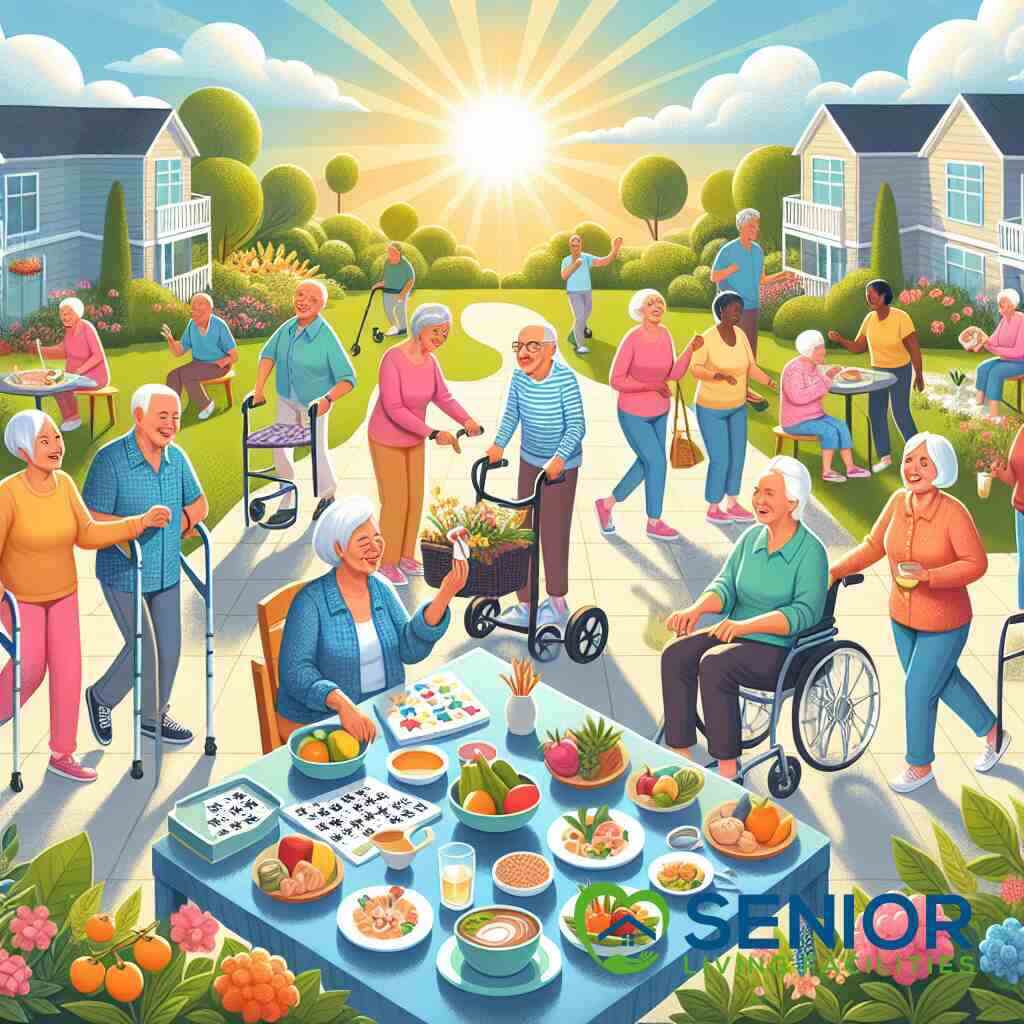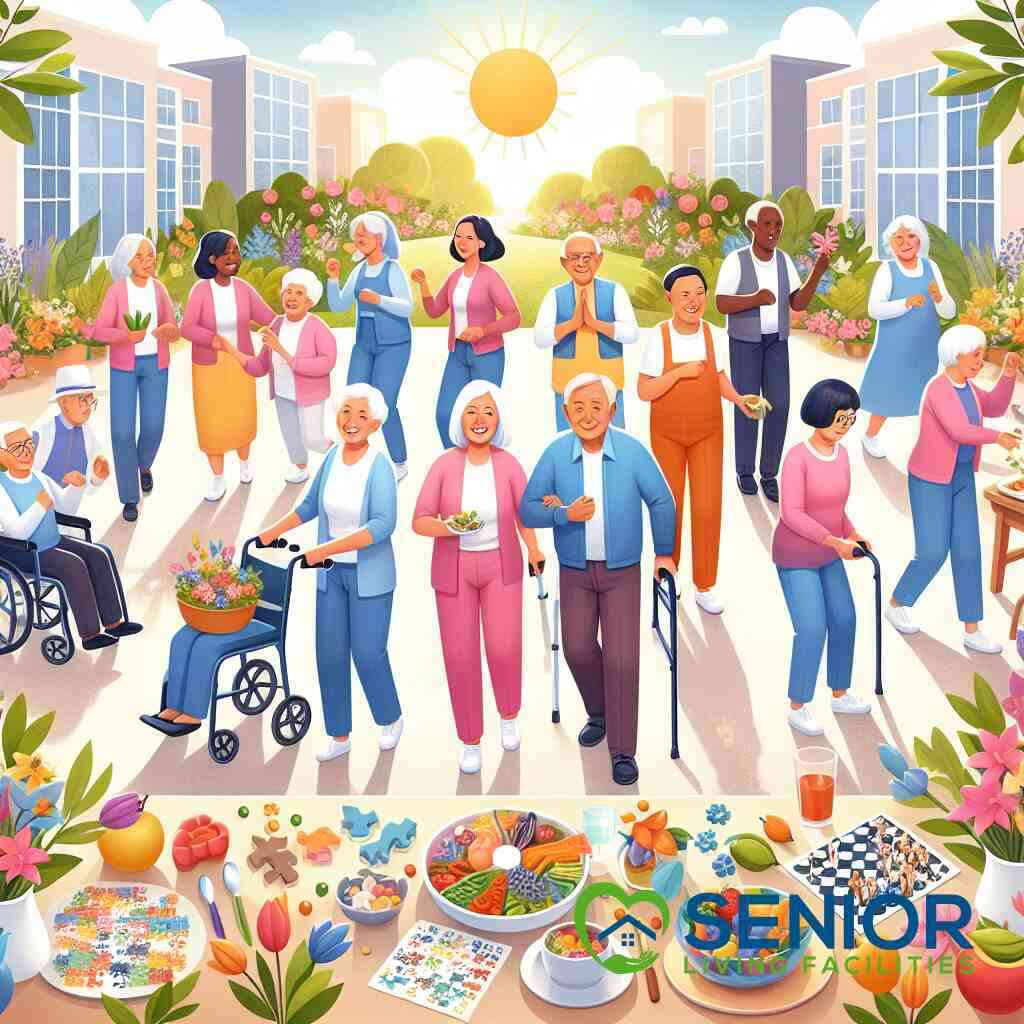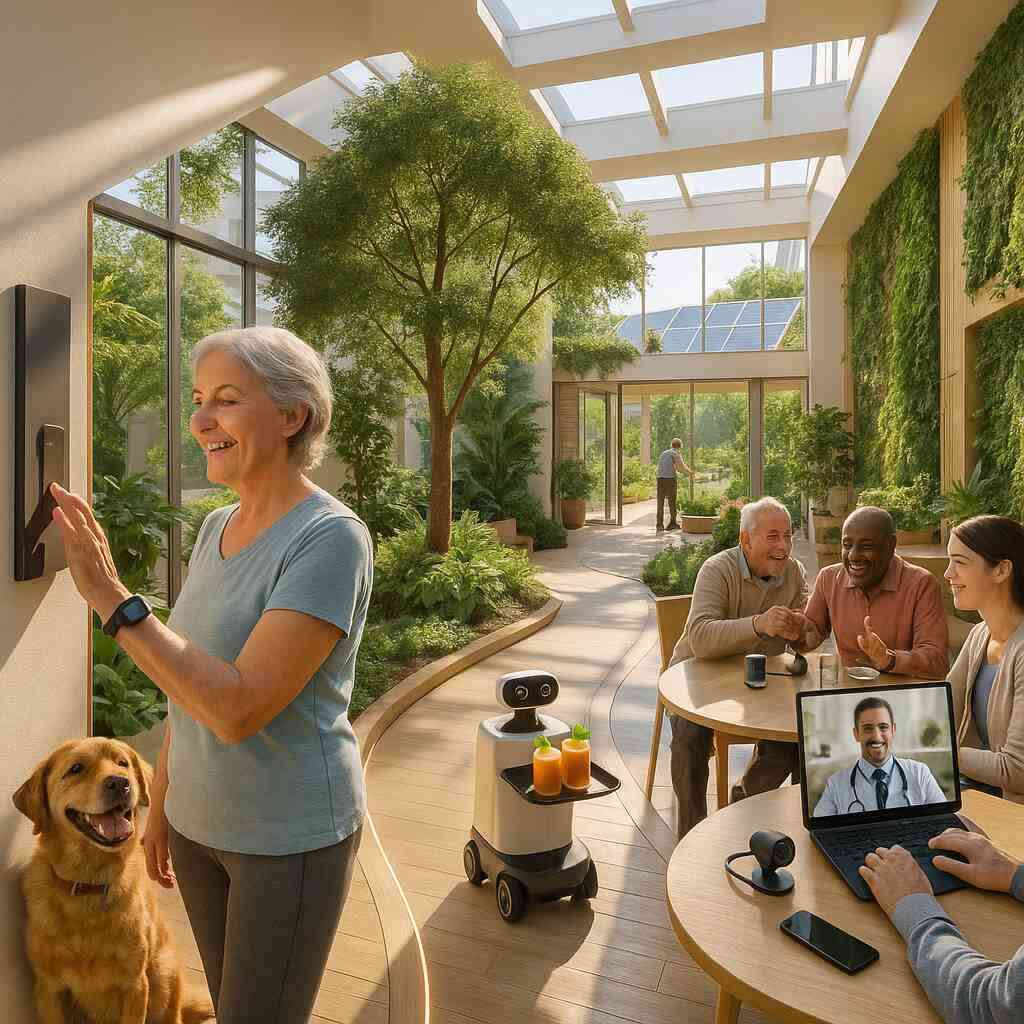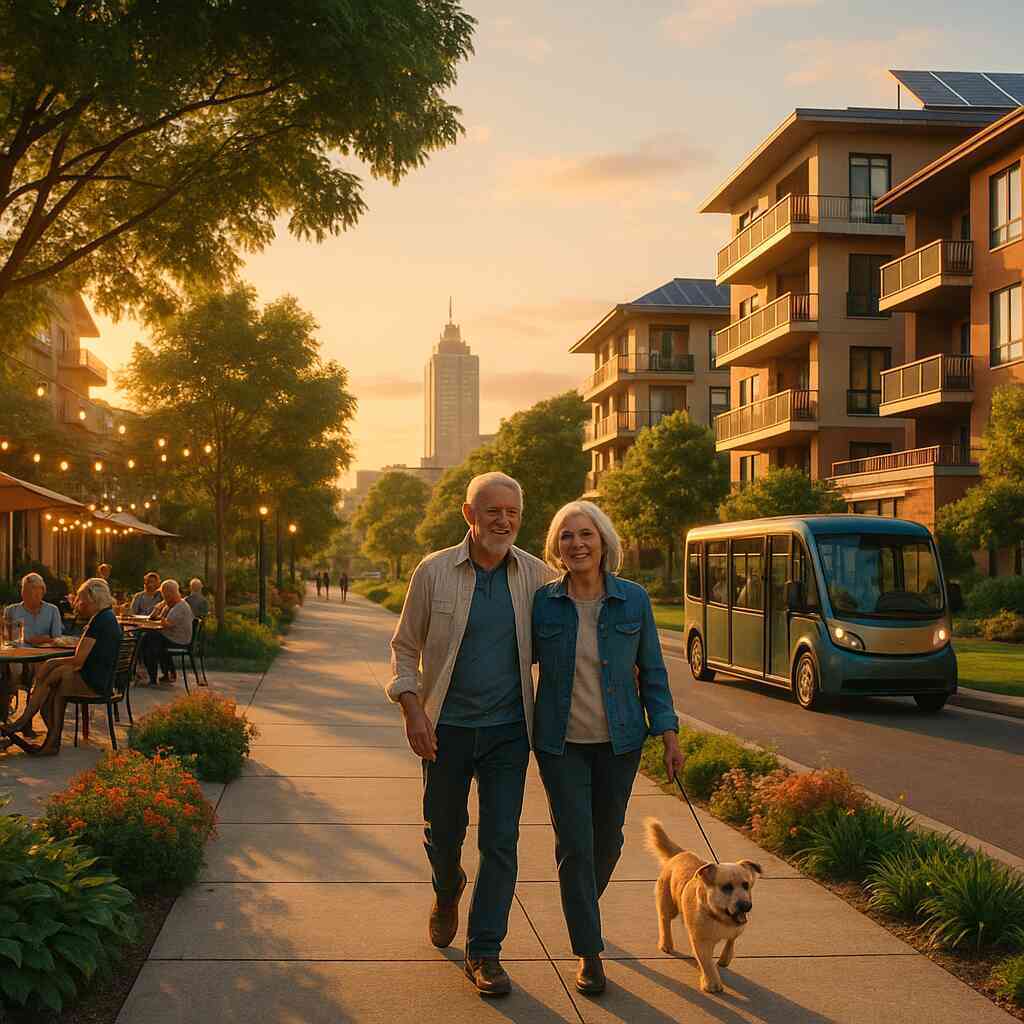
What Are the Activities of Daily Living in Senior Care
June 4, 2025
Navigating the Essentials: An Introduction to Senior Care
Understanding Senior Living Ecosystems
Senior living ecosystems are complex yet beautifully designed environments catering to the diverse needs of older adults. They consist of various communities offering tailored services such as independent living, assisted living, and nursing homes. These communities emphasize fostering an environment where seniors can thrive through a blend of autonomy, medical support, and social connectivity. Integral to understanding these ecosystems is recognizing the necessity for facilities that provide well-rounded care, keeping in mind daily activities that maintain and enhance the quality of life. By appreciating these systems, families can find the most suitable senior living facilities that meet the unique needs of their loved ones.
Personalized Care for the Elderly
The cornerstone of senior care revolves around providing personalized attention that acknowledges the individual needs of each resident. Every senior has distinct healthcare and personal preferences, necessitating customized plans to ensure optimal comfort and health. Personal care encompasses a variety of aspects, from medical assistance to daily living tasks like grooming and bathing. By focusing on personal care for seniors, facilities can develop targeted strategies that accommodate both medical needs and personal preferences. This personalized approach not only supports physical health but also promotes emotional well-being, fostering a sense of belonging and purpose for each senior.
Exploring Senior Living Options
Exploring different senior living options is an exercise in understanding varied care levels, social opportunities, and lifestyle integrations available to seniors. Prospective residents and their families can choose from a spectrum of housing options for seniors, including retirement communities, independent senior living, assisted living facilities, and long-term care solutions. Each option offers unique benefits, such as different levels of 24/7 care, social activities, and living arrangements tailored to the resident’s health and lifestyle needs. This exploration involves considering geographical location, community amenities, and the scope of healthcare services offered. By comprehensively assessing these factors, families can make informed decisions to ensure their loved ones enjoy fulfilling golden years in the right senior living facilities.
Exploring the Core: Activities of Daily Living (ADLs) Unveiled
The Pillars of Daily Independence
Activities of Daily Living (ADLs) form the foundation of daily independence for seniors. These essential daily activities include basic tasks that most individuals perform without assistance, such as eating, bathing, dressing, toileting, and transferring. Mastery over these activities is crucial for maintaining self-sufficiency and dignity in senior life. In senior care communities, these tasks often require tailored support to help residents maintain their independence. Engaging in these activities not only helps preserve autonomy but also empowers seniors to live fulfilling lives. As a fundamental aspect of activities of daily living, these pillars are critical for sustaining daily routines and enhancing life quality.
Why ADLs Matter in Senior Care
Understanding the significance of ADLs in senior care is paramount. These activities serve as vital indicators of a senior’s ability to live independently. In assisted living facilities, providing assisted living daily support ensures residents receive necessary aid without compromising their dignity. When seniors struggle with ADLs, it can lead to a decline in their overall health, affecting both physical and emotional well-being. Therefore, facilities must integrate strategies to support these daily tasks, fostering a supportive environment for seniors. By prioritizing ADLs, senior care communities effectively bridge gaps in care, helping residents thrive.
Assessing ADL Needs for Personalized Support
Assessing a senior’s ADL needs is a critical step in crafting personalized care plans. A thorough evaluation of each resident’s capabilities allows care providers to identify areas where assistance is required, such as grooming, bathing, or eating. Personalized support plans can then be designed to align with individual preferences and medical requirements, ensuring that residents receive optimal care. Facilities offering senior care in states like Florida and Alabama excel in tailoring care based on comprehensive ADL assessments. This tailored approach not only uplifts seniors’ daily living experiences but also ensures that their dignity and independence are preserved. By accurately assessing ADL needs, facilities can create environments where seniors feel valued and supported.

Enhancing Life: Elderly Care Routines and Support Systems
Empowering Seniors: Independence Through Daily Assistance
Empowering senior independence is at the heart of enhancing daily life. Facilities provide structured support that allows seniors to engage in their daily activities with confidence and dignity. Refer to What Are Essential Features of Senior Living Facilities? This empowerment involves a careful balance of offering help when necessary while encouraging seniors to take part in tasks they can handle independently. By doing so, providers foster a sense of achievement and self-reliance in everyday routines. With tailored daily assistance, seniors retain their autonomy and continue to lead lives with purpose and satisfaction.
Bathing, Grooming, and Hygiene: Key Aspects of Personal Care
Maintaining hygiene is essential for physical and mental well-being. Facilities ensure seniors receive comprehensive personal care, including bathing, grooming, and daily hygiene tasks. These routines are crucial for both health and dignity, and staff are trained to provide sensitive and respectful assistance. Personalized grooming aid for seniors can significantly impact their self-esteem, encouraging a positive outlook on life. This attention to detail in senior hygiene care allows residents to feel refreshed and comfortable, contributing to a higher quality of life in senior living environments.
Meal Preparation and Nutritional Support in Senior Living
Nutrition plays a pivotal role in senior health and vitality. Facilities prioritize meal preparation for seniors to ensure a balanced and nutritious diet is consistently available. Expertly crafted meal plans cater to the unique dietary needs and preferences of each resident. The focus on nutritional support in senior living goes beyond just feeding; it ensures meals are enjoyable and varied to enhance the dining experience. By prioritizing nutrition, communities empower seniors to embrace a lifestyle that supports longevity and well-being. This dedication to culinary excellence strengthens both body and spirit, reinforcing a holistic approach to senior care.
Learn more about meal preparation for seniors to understand how these services benefit daily living.
Beyond Basics: Supporting Enhanced Senior Independence
Mobility and Transportation Aids for the Elderly
Maintaining mobility is vital for seniors as it enhances both independence and quality of life. Facilities offer various mobility aids for the elderly to support daily movement, ranging from walkers and canes to motorized scooters. These aids not only boost confidence in navigating daily spaces but also reduce risks of falls and injuries. Additionally, senior transportation assistance services ensure that seniors have reliable access to essential appointments and social engagements outside their community. By integrating transportation solutions, facilities promote seamless access to activities, health care, and social connections, thus enriching senior living experiences significantly.
Cognitive and Companionship Activities for Enhancing Senior Life
Cognitive health is a cornerstone of senior well-being. Engaging in cognitive activities for seniors helps maintain mental sharpness and agility. Activities such as puzzles, memory games, and creative arts stimulate the brain, offering both entertainment and therapeutic value. Facilities also emphasize elderly companionship activities to foster social bonds and emotional support among residents. Regular interaction not only combats loneliness but also encourages a sense of community and belonging. Together, cognitive and companionship activities provide a balanced approach to enhancing senior life, bolstering emotional and mental well-being across communities.
Promoting an Active Lifestyle: Exercise Routines for Seniors
Physical activity is paramount for sustaining health and vitality in senior care. Tailored exercise routines for seniors focus on flexibility, strength, and cardiovascular health, accommodating various fitness levels and abilities. These routines often incorporate low-impact exercises such as walking, tai chi, and water aerobics, designed to enhance mobility and joint health without overexertion. Regular physical activity supports independence by improving balance, reducing the risk of falls, and aiding in the management of chronic conditions. By promoting an active lifestyle, senior living facilities empower residents to embrace a holistic approach to health, ultimately uplifting their everyday experiences and overall quality of life.

Bringing It All Together: The Future of Senior Care
Advancing Care with Tailored Senior Solutions
In the ever-evolving landscape of senior care, the personalization of services stands at the forefront of innovation. Today’s senior living facilities focus on advancing care by offering tailored solutions that meet the unique needs and preferences of each resident. These personalized strategies range from medical care adjustments to customized daily living assistance, ensuring that seniors receive the support necessary to thrive. By embracing new technologies and care methodologies, facilities can enhance these offerings, ultimately leading to improved resident satisfaction and well-being. Moreover, as society places greater emphasis on individualized care, providers remain committed to refining and expanding these tailored solutions to better serve the diverse senior population. When it comes to finding the right facility, states like Georgia provide diverse options to suit various needs.
Building Communities for Seniors 55+
As the demand for senior housing solutions grows, building vibrant and supportive communities for individuals 55 and older becomes imperative. These communities offer more than just a place to live; they provide a rich tapestry of social interactions and supportive networks that are vital for holistic well-being. By integrating amenities such as fitness centers, art studios, and communal gardens, senior living facilities foster environments where residents can pursue hobbies and cultivate friendships. Additionally, such communities emphasize inclusivity and accessibility, ensuring that all residents, regardless of mobility limitations, can participate fully in communal life. These thoughtfully designed environments cater to the emotional and social needs of seniors, creating spaces where they can live with dignity and purpose.
Fostering Independence: A Holistic Approach to Elderly Care
Fostering independence in elderly care is about creating a symbiotic relationship between support and autonomy. Facilities adopt a holistic approach to care by focusing on comprehensive strategies that address not just the physical, but also the emotional, social, and cognitive needs of seniors. This method involves empowering residents through opportunities for meaningful engagement while providing necessary assistance with tasks that maintain their independence. By promoting an environment where seniors can take control of their daily routines, facilities create a sense of empowerment and well-being among residents. The holistic approach seeks to reinforce each resident’s value and contributions, encouraging a fulfilling and vibrant life. For seniors exploring living options in the southern states, Mississippi offers facilities that prioritize fostering independence in each resident’s lifestyle.
Frequently Asked Questions
Question: What are activities of daily living in senior care, and how do Senior Living Facilities support these activities?
Answer: Activities of daily living (ADLs) are fundamental tasks that are essential for a senior’s independence and quality of life, including eating, bathing, dressing, toileting, and transferring. Dive into What Are Essential Daily Activities in Senior Living? At Senior Living Facilities, we emphasize the importance of ADLs in our care plans. Our communities are designed to provide daily living assistance tailored to each resident’s needs, ensuring dignity and independence are prioritized. Our comprehensive support in daily living activities is delivered through trained staff who understand the necessity of personalized care plans, helping seniors maintain autonomy while receiving the necessary aid.
Question: How do Senior Living Facilities ensure personalized care for seniors when it comes to ADLs?
Answer: Senior Living Facilities recognizes that personalization is key for effective senior care, especially concerning ADLs. We conduct thorough assessments to evaluate each resident’s individual requirements, preferences, and capabilities. This allows us to develop customized care strategies that cater to their specific needs, from personal grooming assistance to nutritional support. Our focus on personal care includes offering elderly care routines that enhance the daily experiences of our residents. By providing such well-rounded and personalized care, we create an environment that values each senior’s independence and well-being.
Question: In the blog titled ‘What Are the Activities of Daily Living in Senior Care,’ how do Senior Living Facilities assist in enhancing daily life for seniors?
Answer: The blog ‘What Are the Activities of Daily Living in Senior Care’ highlights the essence of fostering independent and fulfilling lives for seniors. At Senior Living Facilities, we strive to enhance daily life through a holistic approach that integrates personal care, tailored support, and social engagement. See more on Senior Living Facilities’ Contribution to Wellbeing. We offer services like mobility assistance, senior meal preparation assistance, and cognitive activities for seniors, all aimed at promoting independence and enhancing daily routines. Our facilities are equipped with resources and compassionate staff dedicated to ensuring each resident enjoys a high quality of daily living.
Question: What role do Senior Living Facilities play in providing mobility and transportation solutions for seniors?
Answer: At Senior Living Facilities, we understand the critical role that mobility and transportation play in a senior’s independence and access to social connections. We offer an array of mobility aids for seniors, such as walkers and motorized scooters, to support their daily movement and reduce injury risks. Additionally, our senior transportation assistance services ensure residents can easily access outside appointments and social events. By integrating reliable transportation solutions, we enhance mobility and contribute to the overall quality of life for our residents, allowing them to remain actively engaged within and outside our communities.
Question: How do cognitive and companionship activities at Senior Living Facilities support mental and social well-being for seniors?
Answer: Cognitive and companionship activities are vital components of senior care at Senior Living Facilities. We incorporate a wide range of cognitive activities for seniors, including puzzles and memory games, to maintain mental sharpness and provide therapeutic value. Our facilities also prioritize elderly companionship activities to encourage social interaction and emotional bonds among residents. Look into The Role of Community in Senior Living Facilities Today. These initiatives combat loneliness and foster community, creating a balanced approach that supports both mental and social well-being. By participating in these activities, seniors benefit from enhanced quality of life and a supportive community environment.


